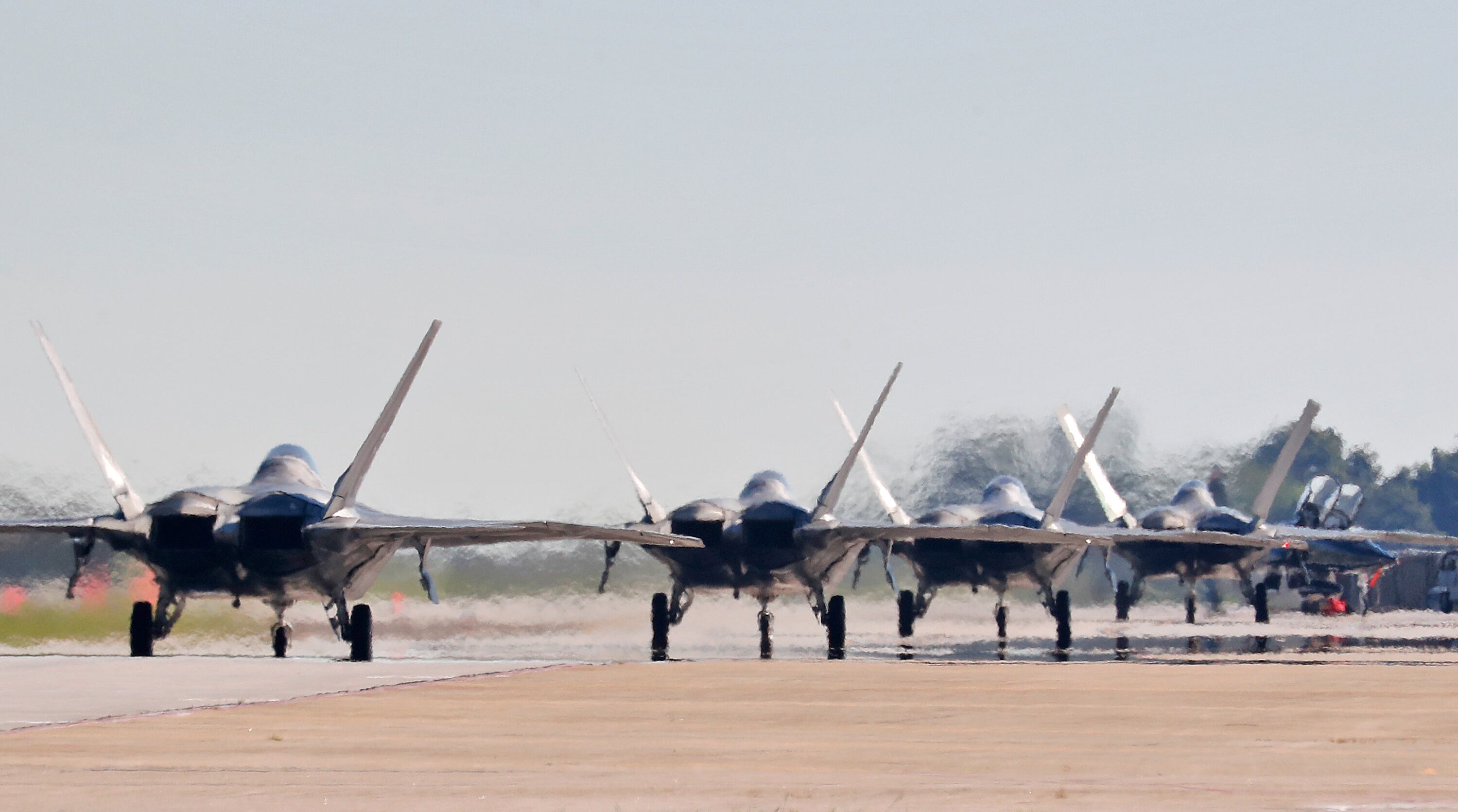With pressure on the Air Force to get readiness rates up for some of its most crucial fighter aircraft, the service is preparing to bolster Air National Guard units to allow them to run second maintenance shifts.
In a panel discussion at the Defense One Summit in Washington Thursday, Air Force Secretary Heather Wilson said that increasing maintenance manpower and improving the supply chain to keep spare parts flowing are two of the most important factors in improving mission-capable rates.
Defense Secretary Jim Mattis has ordered the Air Force to get its F-16, F-22 and F-35 mission-capable rates up to 80 percent by the end of 2019. And with mission-capable rates for F-22s and F-35s at 49 percent and 55 percent, respectively, at the end of fiscal 2017, the most recent year for which data was available, that presents a challenge.
During her discussion, Wilson said improving readiness so the Air Force can win any fight, at any time is the service’s number one goal. The fact that the service has shrunk since 1990, while the fleet has continued to age and the demands on the force have continued to grow, “was stunning to me” and is hurting readiness, she said.
RELATED

The Air Force is focusing on squadrons as it tries to get up to the 80 percent benchmark — particularly in squadrons that would be called upon if a conflict were to erupt with Russia or China, Wilson said. Service officials are seeing progress: The fleet is 15 percent more ready than it was 15 months ago, she said, and 75 percent of operational units with combat missions are ready to fly.
The Air Force has all but eliminated a shortfall of maintainers that, at one point, reached 4,000 and set off alarm bells throughout the service. But more needs to be done, Wilson said.
For example, many Guard units don’t have second-shift maintainers who are able to work on planes that come in from an afternoon flight with something broken or in need of maintenance, Wilson said. That means those planes won’t be ready to fly in the morning, and readiness suffers in those units.
When those units get a second shift, Wilson said, they’ll be able to immediately start working on a broken fighter or other aircraft as soon as it comes in, so it’ll be ready the next day.
Wilson said those units' second shifts could be staffed with either Guardsmen or contractors.
The Air Force is also working to improve the flow of spare parts to the field, which Wilson said is a major factor that keeps planes on the ground.
“When an aircraft is down for maintenance, sometimes it’s not about the maintenance itself, it’s about you waiting for the part to come in,” she said.
The Air Force plans to make greater use of conditions-based maintenance to predict when parts are likely to fail and catch them before they break, rather than simply waiting for them to break and replacing them afterward. This reduces costs considerably, she said.
The Air Force is also making greater use of 3D printing to speed up production of some spare parts, Wilson noted.
♦ ♦ ♦
TELL US
The Air Force has been ordered to get mission-capable rates for key fighter aircraft up to 80 percent — and that could be a heavy lift.
If you’re an F-16, F-22 or F-35 maintainer, we want to hear what you think that’s going to mean for you. Are you expecting longer hours or more weekend shifts? Does your squadron have the resources and manpower to hit 80 percent? Is that goal even achievable?
Write to Senior Staff Writer Steve Losey to share your thoughts. Please include your name and where you are stationed. We will not use any identifying information without your express permission in a follow-up email. If you prefer that your name not be included in a story, we’ll maintain your anonymity.
Stephen Losey is the air warfare reporter for Defense News. He previously covered leadership and personnel issues at Air Force Times, and the Pentagon, special operations and air warfare at Military.com. He has traveled to the Middle East to cover U.S. Air Force operations.




